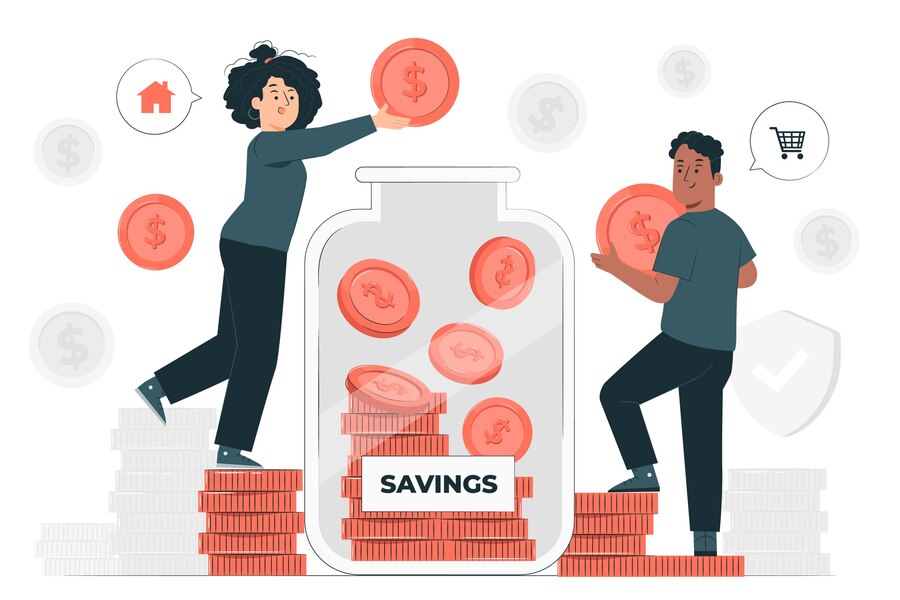Making financial decisions that can affect your present and future is always overwhelming, and choosing the kind of term deposits you need is not an exception.
Many people find it difficult to maintain a balance between keeping money accessible and getting high returns. But if you are informed and have the right guidance, striking this balance becomes much easier.
Today, you will read about the advantages and disadvantages of both short-term and long-term deposits to help you understand and make an informed decision regarding your financial needs.
What Are Term Deposits?
A term deposit is a low-risk savings option where your money is locked away for a specific period, known as the term, at a fixed interest rate. This means you’ll know exactly how much interest you’ll earn by the end of the term.
They’re a favourite for many Australians because they provide guaranteed returns, making them a safe way to grow your savings. The fixed interest rate shields you from changes in the financial market.
In Australia, term deposits are even more secure thanks to the Financial Claims Scheme (FCS), a government-backed safety net. The FCS guarantees deposits of up to $250,000 per account holder per Authorised Deposit-taking Institution (ADI).
This means your savings are protected even in the unlikely event of a bank failure. Additionally, the FCS extends to most general insurance policies, covering claims up to $5,000, with larger claims eligible under specific conditions.
This extra layer of security makes term deposits a trusted and reliable choice for Australians looking for financial stability.
Short-Term Deposits: Pros and Cons
Short-term deposits in Australia typically last between 1 month and 12 months, making them a flexible savings option for people with short-term financial goals.
While they come with several advantages, there are also some drawbacks to consider.
Benefits of Short-Term Deposits:
- Flexibility: Short-term deposits are perfect if you’re saving for something in the near future, like a holiday or building an emergency fund.
- Liquidity: Your money isn’t tied up for years, giving you quicker access to your savings once the term ends.
- Opportunity for Better Rates: Short-term deposits let you reinvest more frequently at potentially higher rates in a rising interest rate market.
Drawbacks of Short-Term Deposits:
- Lower Interest Rates: Shorter terms usually come with lower returns compared to long-term options, which might not suit those seeking higher growth.
- Frequent Reinvestment: Managing short-term deposits can take more effort, as you’ll need to keep track of maturity dates and renew them regularly to avoid losing interest.
Short-term deposits are best suited for those who value flexibility and quick access to their money, even if it means accepting slightly lower returns.
Long-Term Deposits: Pros and Cons
Long-term deposits in Australia typically last between 1 year and five or more years. They are designed for those who want to maximise their returns over time.
Benefits of Long-Term Deposits:
- Higher Interest Rates: Long-term deposits usually offer better interest rates, meaning you’ll earn more on your savings over the term.
- Stability: Your interest rate is locked in for the duration of the term, protecting you from falling rates in the market.
- Set-and-Forget: Ideal for long-term goals like saving for a house deposit, a child’s education, or retirement.
Drawbacks of Long-Term Deposits:
- Lack of Liquidity: Your money is locked away for the entire term, and withdrawing early often results in penalties and lost interest.
- Opportunity Cost: If market interest rates rise during the term, you could miss out on better returns elsewhere.
Long-term deposits are a great choice for those who prioritise stability and higher returns, but they require careful planning to make sure you won’t need access to your money before the term ends.
Factors to Consider While Choosing a Term Deposit
Selecting the right term deposit in Australia involves more than just looking at interest rates.
Here are some key factors to think about to make sure you are making an informed choice:
- Your Financial Goals
Start by identifying your savings goals. Are you saving for something in the near future, like a holiday or an emergency fund? If so, a short-term deposit might be better. A long-term deposit could be the right fit for longer-term goals, like a home deposit or retirement.
- Market Conditions
Consider where interest rates are heading. If rates are rising, a short-term deposit allows you to reinvest at better rates. However, if rates are expected to drop, locking in a long-term deposit could secure higher returns now.
- Risk Tolerance
Think about your comfort level when locking away your money. If you’re okay with limited access, a longer-term deposit might work. But if you value flexibility, a shorter-term deposit offers quicker access to your savings.
- Flexibility of Withdrawal
Understand the penalties for early withdrawal. If there’s a chance you might need the money before the term ends, choose a term deposit with lower penalties or stick to shorter terms.
- Diversification
You don’t have to choose just one. Combining short- and long-term deposits can give you the best of both worlds—flexibility for immediate needs and higher returns for future goals.
Final Words
Choosing the right term deposit in Australia doesn’t have to be complicated. Start by evaluating your financial goals and consider the current market conditions.
Ready to take the next step?
Start comparing term deposit options today to find the perfect match for your savings needs. With the right choice, you can make your money work smarter and achieve your financial goals with confidence!


































